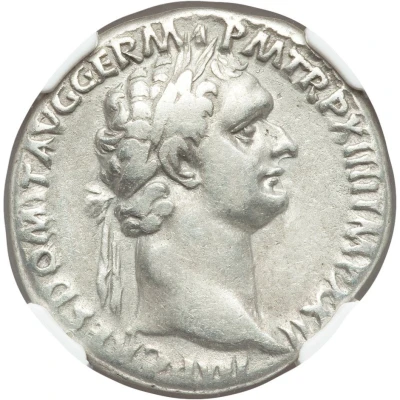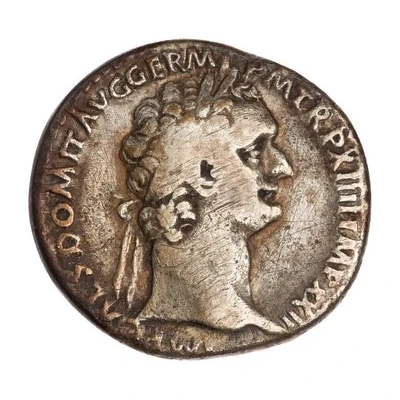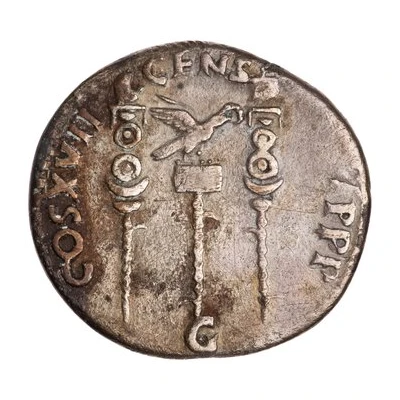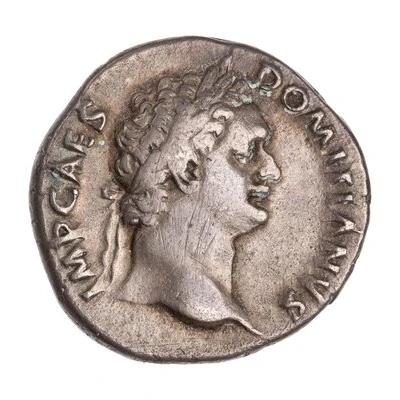


© Heritage Auctions
Cistophorus - Domitian COS XVII CENS P P P G
95 year| Silver | 9.95 g | 25 mm |
| Issuer | Rome › Roman Empire (27 BC - 395 AD) |
|---|---|
| Emperor | Domitian (Titus Flavius Domitianus) (81-96) |
| Type | Standard circulation coin |
| Year | 95 |
| Value | Cistophorus = 3 Drachms = 3 Denarii |
| Currency | Denarius, Reform of Augustus (27 BC – AD 215) |
| Composition | Silver |
| Weight | 9.95 g |
| Diameter | 25 mm |
| Shape | Round (irregular) |
| Technique | Hammered |
| Orientation | Variable alignment ↺ |
| Demonetized | Yes |
| Updated | 2024-10-05 |
| Numista | N#252285 |
|---|---|
| Rarity index | 100% |
Reverse
Aquila between two standards; one decorated with banner, the other decorated with hand.
Script: Latin
Lettering: COS XVII CENS P P P G
Unabridged legend: Consul Septimum Decimum, Censor Perpetuus, Pater Patriae, G
Translation: Consul for the 17th time, censor for life, father of the nation, G
Comment
Source: Online Coins of the Roman Empire (OCRE)Interesting fact
One interesting fact about the Cistophorus - Domitian coin is that it features a unique design on its reverse side. Instead of the usual depiction of a Roman deity or a personification of a province, this coin shows a stylized representation of the Roman Empire's coat of arms, with the letters "COS" (for Consul) and "P P P G" (for Pontifex Maximus, Pater Patriae, and Gladiator) surrounding a shield with the initials "SPQR" (for Senatus Populusque Romanus, or "The Senate and People of Rome"). This design was used specifically for coins issued during Domitian's reign (81-96 AD) and symbolizes the unity and power of the Roman Empire under his rule.



